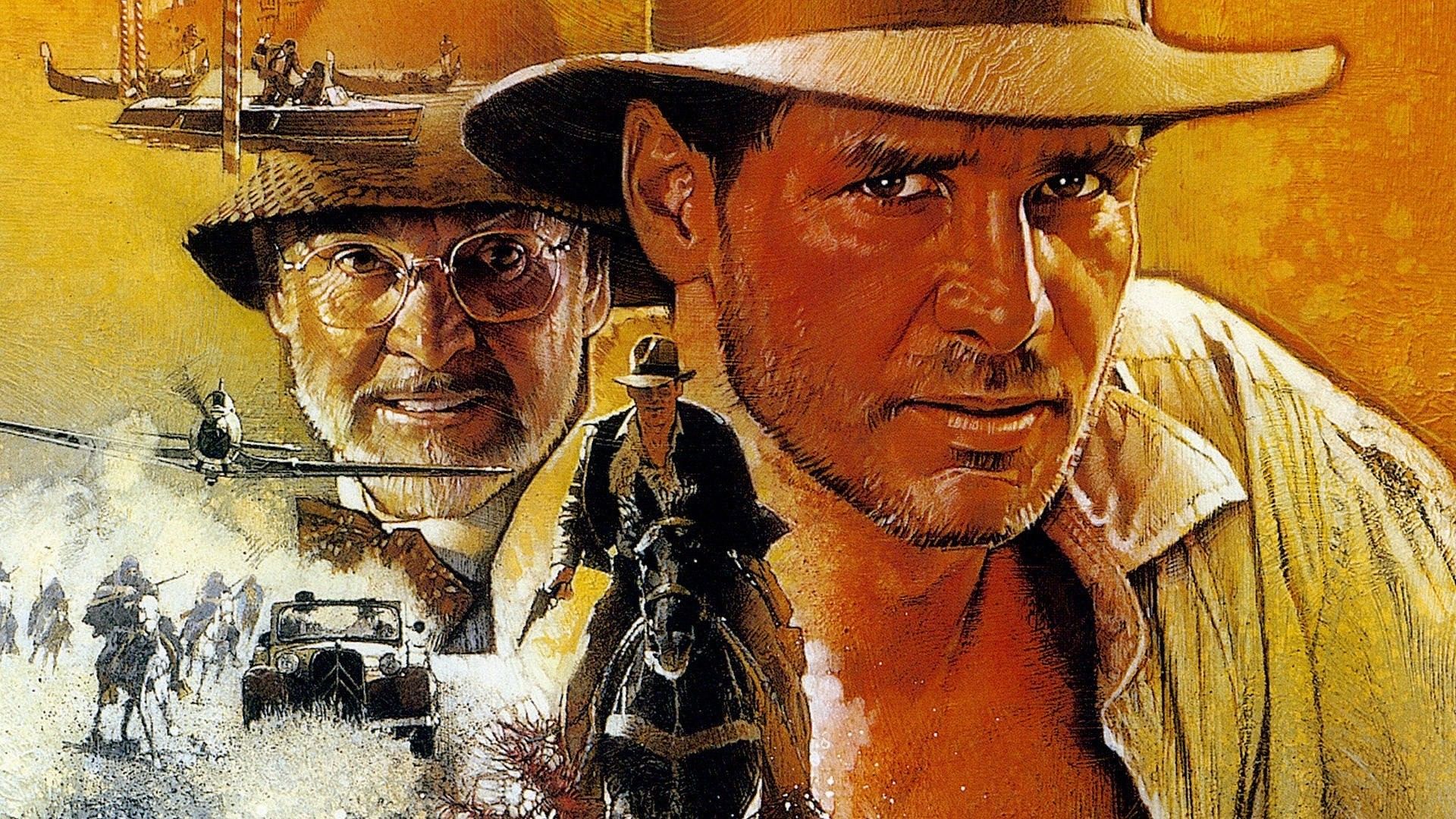After a lukewarm response to the shockingly dark Indiana Jones and the Temple of Doom, George Lucas and Steven Spielberg went back to the drawing board for the conclusion of the trilogy, Indiana Jones and the Last Crusade. Crusade essentially copies the first Indy film, Raiders of the Lost Ark, but adds enough twists and turns to make the whole affair seem fresh. In fact, Crusade manages to top Raiders because of the film’s central story: reuniting Indiana Jones with his father.
The film starts out with a flashback that has nothing to do with the main story, but makes for a wonderful digression, setting up the relationship between Indy and his father and explaining the backstory for many of Indy’s trademarks (the whip, the hat, the scar on his face). It then transitions into the film’s main story, Indy’s pursuit of the Holy Grail. The search takes him from Venice to Austria to the Middle East in typical globetrotting fashion. Ford owns the role of Indiana, while Sean Connery makes for a scene-stealing addition as Indy’s father, Henry Jones.
Crusade does not break a lot of new ground, but it still makes for a very entertaining yarn with some spectacular action scenes. The basic structure is the same as Raiders: Indy finds a clue, which takes him to some spectacular historic site where he encounters the enemy (Nazis, like in Raiders), a fight scene ensues, usually involving a spectacular escape, and then the story progresses. Raiders’ chase scene is nearly impossible to top, but Crusade comes extremely close. A great scene involving a tank is the highlight of the film. Spielberg brilliantly directs the sequence, and shows off the cooperation between Indy, his father, and his cohort, Marcus Brody. It is a pleasure to watch Harrison Ford punch his way through Nazis on top of the tank while the incomparable Sean Connery and Denholm Elliot (Brody) outthink their captors inside the tank.
Best of all, the tank chase shows off the reason why Indiana Jones is one of the greatest heroes in all of cinema: he actually gets beaten. Raiders’ truck chase had a ball beating the snot out of Indy, only to have him triumph at the end. Crusade does something similar by having Indy trapped on the side of the tank and dragged against rocks. Then, the film fakes out the viewer by showing his supposed death as the tank plummets off a cliff. No one really believes that he is dead, but showing his father’s reaction helps reinforce the emotional arc of the story. Moreover, the audience sees how exhausted and beaten Indy is by the end of the sequence, and it makes him all the more human a protagonist. This is something that modern day action films seem to have forgotten: you have to show that your hero can bleed in order to make the audience care about him.
For most of the film, Crusade and Raiders are on mostly equal levels. But Crusade is elevated by the presence of Sean Connery. Raiders lacked Crusade’s emotional core. The film can be seen in two different lights: one, a story about Indy’s quest to find the Grail, or another as his attempt to reunite and reconnect with his father. The parent-trying-to-reconnect-with-lost-child trope is something that Spielberg uses again and again in his films, but it is at its best here. Connery and Ford are such fantastic actors that the audience can connect to every scene they are in together. The arc is brought to a conclusion when Indy saves his dying father and they ride off into the sunset together. It is a surprisingly layered story for an Indiana Jones film, but Spielberg, Ford, and Connery knock it out of the park.
The story is also pleasantly low-stakes. Where Raiders told the story of Hitler’s attempt to obtain the Ark for world dominance, Crusade never really clarifies what the villain’s plan is, besides gaining immortality. This helps tell a far more personal story, and Julian Glover is probably the franchise’s best villain. He gives a relatable performance, and just like every other villain Jones faces, his ambition eventually destroys him. The three tests Indy has to face also make for some of the film’s tensest scenes, and it is a very clever way for the movie to provide a climax that is satisfying for the story and for the emotional arcs, as Indy completes the task in order to be able to save his father.
The Last Crusade is the quintessential Indiana Jones movie. The action scenes are great, the sense of adventure is there, and the performances are spectacular. It is certainly one of the best trilogy enders of all time. Plus, what other movie could give us Indiana Jones and James Bond on the screen at the same time? That is something that will probably never happen again.






In regards to the last two sentences of this article, technically Cowboys and Aliens had Indiana Jones (Harrison Ford) and James Bond (Daniel Craig) “on screen at the same time.” ;)
The distinction here is that James Bond is Indiana Jones’ father.
That’s true, but nowhere in the last paragraph is that implied.
You mention that Crusade tops Raiders due to the Ford/Connery father/son relationship, but I disagree. Raiders gives us the Ford/Allen Indi/Marion relationship, which was fantastic, plus the film was much grittier than Crusade, which was more slapstick with the comedy moments.